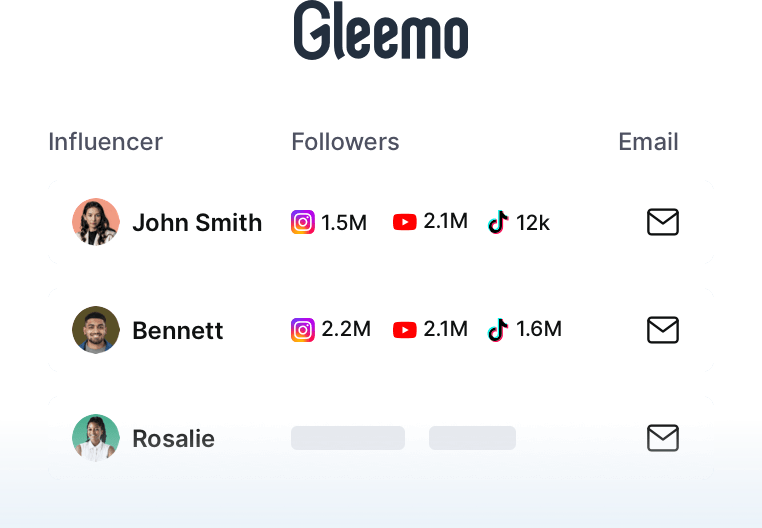TikTok has revolutionized how culinary trends emerge, spread, and influence global food culture. In 2025, TikTok food trends continue to dominate social media, shaping consumer preferences, restaurant menus, and grocery sales.
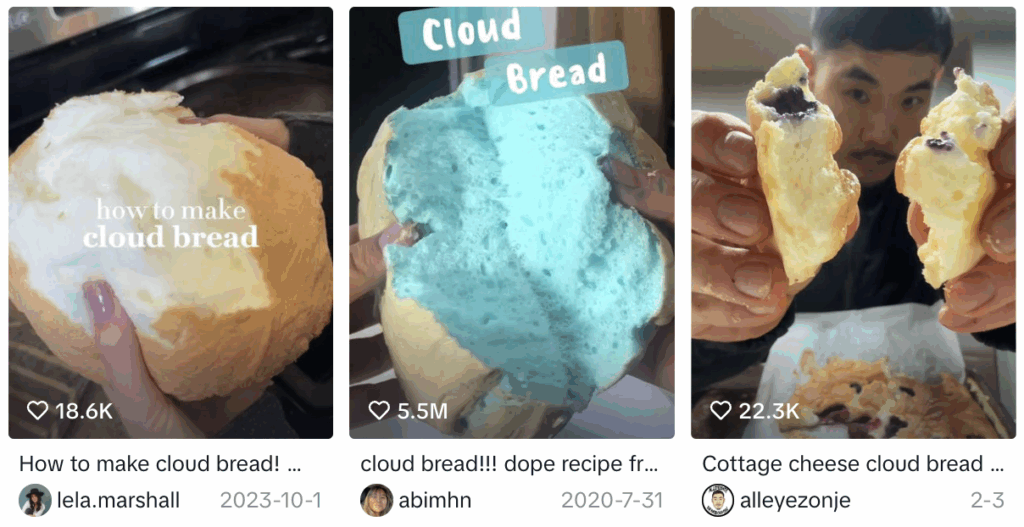
From viral recipes like “cloud bread” to niche culinary hacks, the platform’s algorithm prioritizes authenticity and creativity, making it a breeding ground for innovation. This article analyzes the latest benchmarks, industry insights, and future predictions for TikTok food trends while exploring their impact on businesses and creators.
Why TikTok Food Trends Matter in 2025
TikTok, with its massive user base and rapid content dissemination capabilities, has become a significant driver of food trends. Below is a detailed analysis of why TikTok food trends matter in 2025:
Driven by TikTok’s Algorithm and User Characteristics
TikTok’s algorithm recommends content based on users’ interests, behaviors, and preferences, enabling food-related videos to quickly reach a large audience. With over 1 billion monthly active users globally, TikTok boasts a diverse user base spanning different age groups, genders, and regions.
Among them, Gen Z and Millennials are highly active and enthusiastic about food content. Their willingness to try new things and share experiences makes them key participants and promoters of food trends. Once a food trend emerges on TikTok, it can rapidly spread and gain traction across the platform.
Reflecting and Shaping Consumer Preferences
TikTok food trends often mirror evolving consumer preferences. For instance, the growing interest in healthy eating has driven the popularity of plant-based recipes and zero-waste dining trends on TikTok.
Meanwhile, the platform’s food trends also influence consumer behavior. TikTok’s food trends can alter consumers’ dietary habits and purchasing decisions, prompting them to try new recipes or ingredients and seek out trending food products.
Offering Marketing Opportunities for Food Brands
TikTok food trends present immense marketing potential for food brands. Brands can leverage trending topics, challenges, and collaborations with food influencers to increase brand visibility and engagement. For instance, the #bakedfetapasta trend on TikTok led to a 200% surge in block feta cheese sales at Harris Teeter grocery stores. By integrating their products into popular food trends, brands can attract user attention and drive purchases.
Moreover, TikTok’s interactive features allow brands to engage directly with users, enhancing brand loyalty and user engagement. Brands can utilize tools like Gleemo to discover and manage food influencer collaborations more efficiently in the dynamic landscape of TikTok food trends.
Key TikTok Food Trends
In 2025, TikTok food trends will continue to thrive and exert a significant influence on the food industry and consumer behavior. Below are some key trends:
Sweet Butter Boards
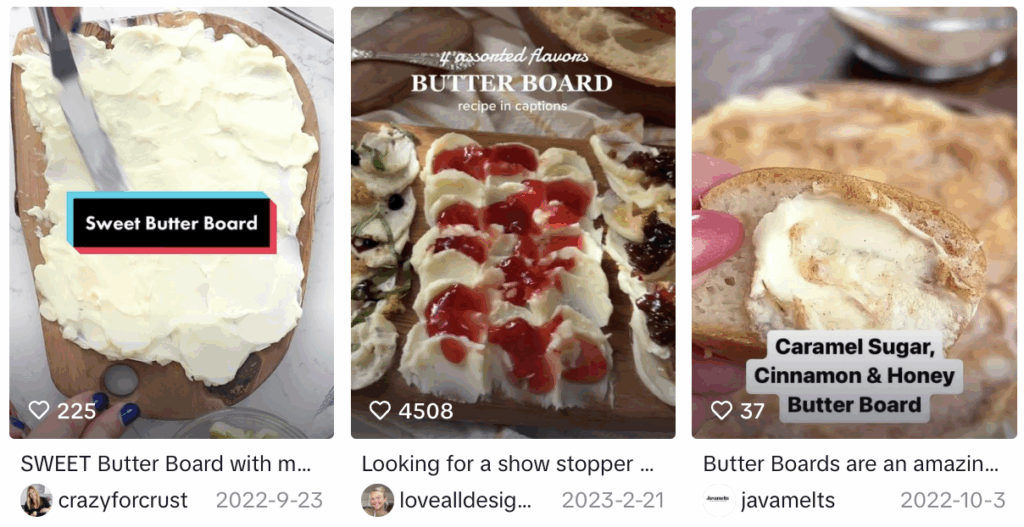
Building on the savory butter board trend from 2023, sweet versions featuring cinnamon, honey, fresh berries, and chocolate butter are now taking center stage. Served on a board, they pair well with brunch, breakfast, and even dessert parties.
Pasta Chips 2.0
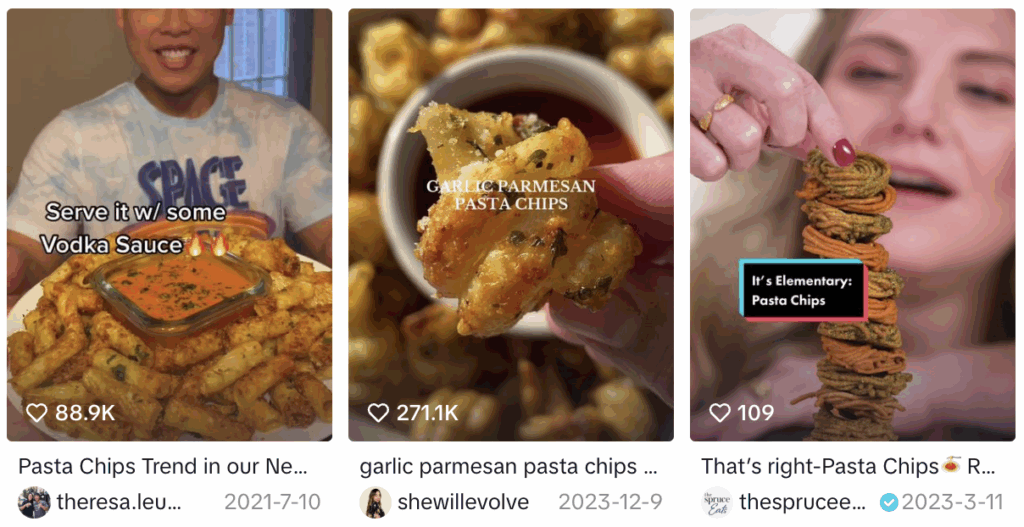
Originally a popular air-fried snack, pasta chips are evolving into new forms. Dipping sauces or spicy oils are becoming standard additions, with some creators experimenting with gluten-free alternatives using chickpea or lentil pasta. Discussions around pasta chips on TikTok rose by 24.78% in 2025.
The Ultimate Smash Burger Tacos
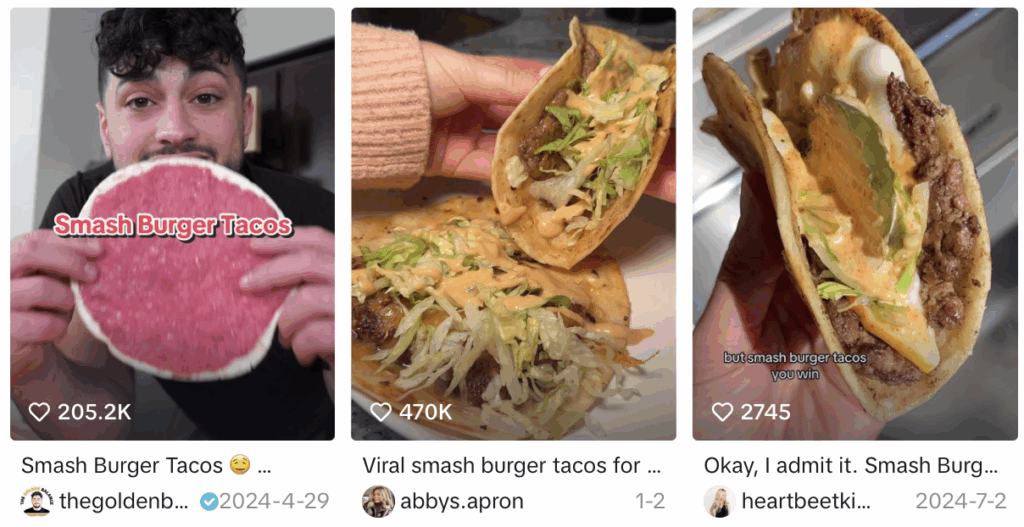
Combining different cuisines, ground beef is pressed onto small tortillas and cooked on a griddle to create crispy edges. Topped with berry cheese, sauces, and crunchy lettuce, these tacos are enriched with collagen for a sweet and savory treat.
Glow-Up Smoothies
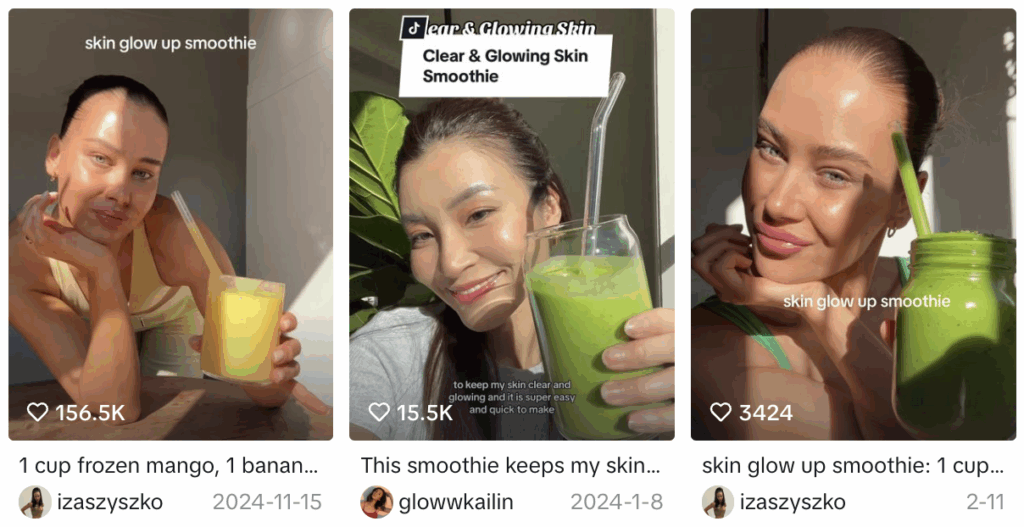
Health-focused TikTokers are revolutionizing the beauty industry with their “glow-up smoothies,” which combine collagen powder, matcha, vitamin C-rich citrus fruits, and antioxidant-rich berries to promote inner beauty while offering a delicious treat.
Lazy Girl Meals
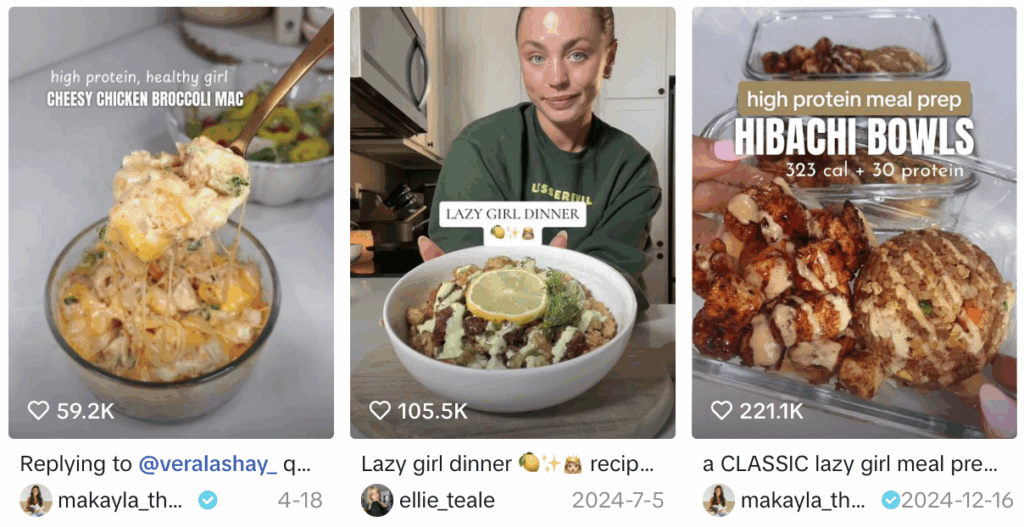
These one-pan recipes require minimal effort but deliver maximum flavor. Examples include cheesy baked gnocchi, sheet pan fajitas, creamy coconut chicken, and garlic butter shrimp. Perfect for busy schedules and novice cooks, these dishes cater to a wide range of dietary needs.
Kelp and Seaweed Snacks
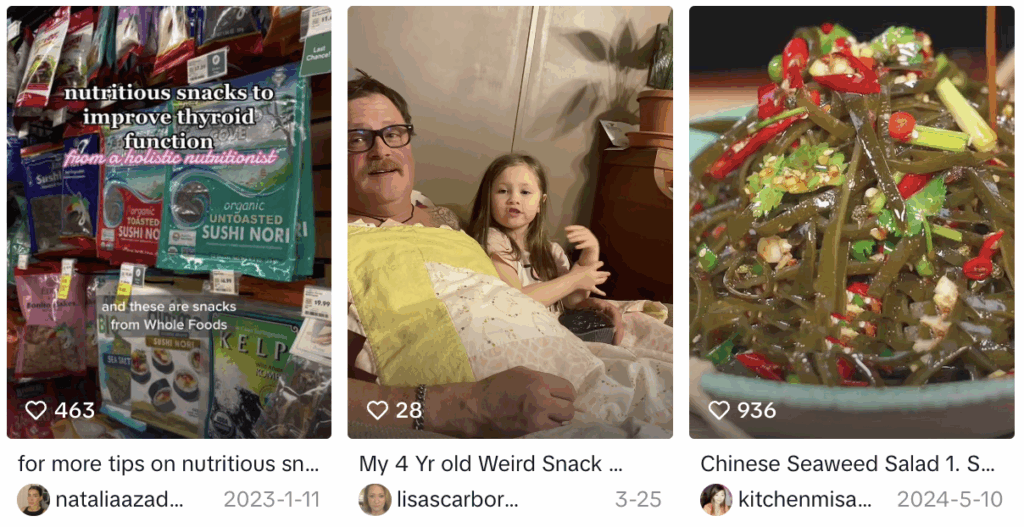
As health consciousness grows, seaweed snacks are gaining traction. From crispy seaweed chips to kelp noodles, TikTok creators are showcasing how these nutrient-rich, eco-friendly ingredients can be delicious. Keep an eye on trends like seaweed pesto, sushi-style bowls, and seaweed-infused desserts.
Coffee Trends
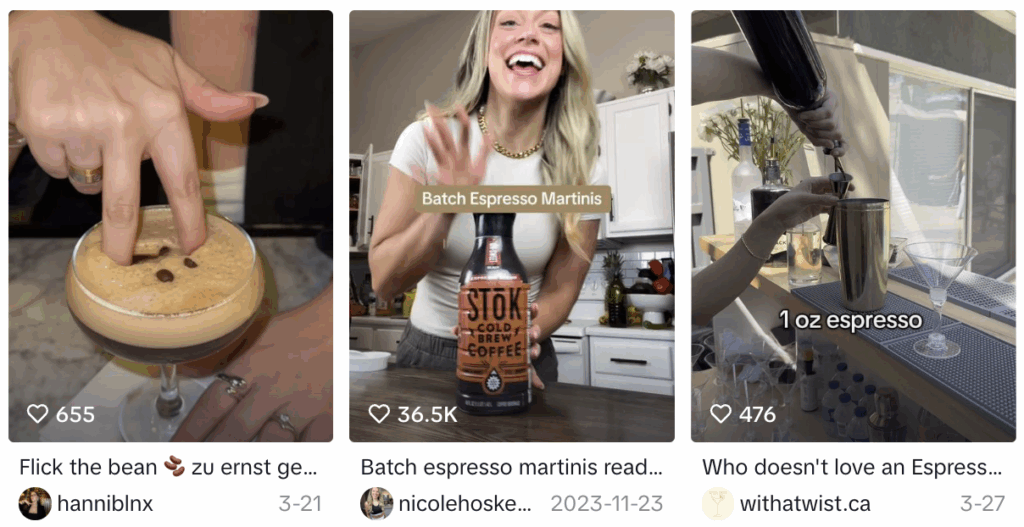
Espresso martinis are making a comeback, this time with a bang! New varieties infused with coconut and salted caramel flavors are emerging. Meanwhile, cloud lattes, initially an Instagram trend, have taken over TikTok and now dominate both platforms. This drink combines frothy whipped milk and espresso, offering a unique twist on coffee.
AI-Powered Recipes
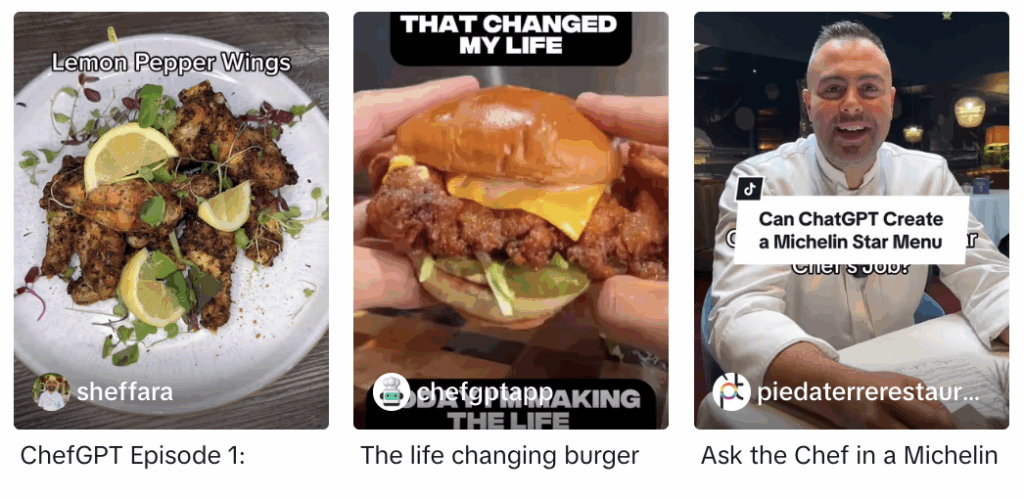
TikTok creators are using AI tools to generate creative recipes. AI-inspired cooking challenges, where creators film themselves cooking and tasting AI-generated wild combinations, are becoming a major trend.
In addition to the above, Dubai pistachio chocolate, whole cucumber salad, carrot salad, tanghulu, and Swedish candy are also trending on TikTok in 2025. The platform’s food trends reflect deeper shifts in consumer food preferences and habits, representing a blend of creativity, social interaction, and cultural exchange. As TikTok continues to evolve, its food trends are likely to become even more diverse and impactful, reshaping the food industry and consumer behavior in new ways.
Industry Insights on TikTok Food Trends
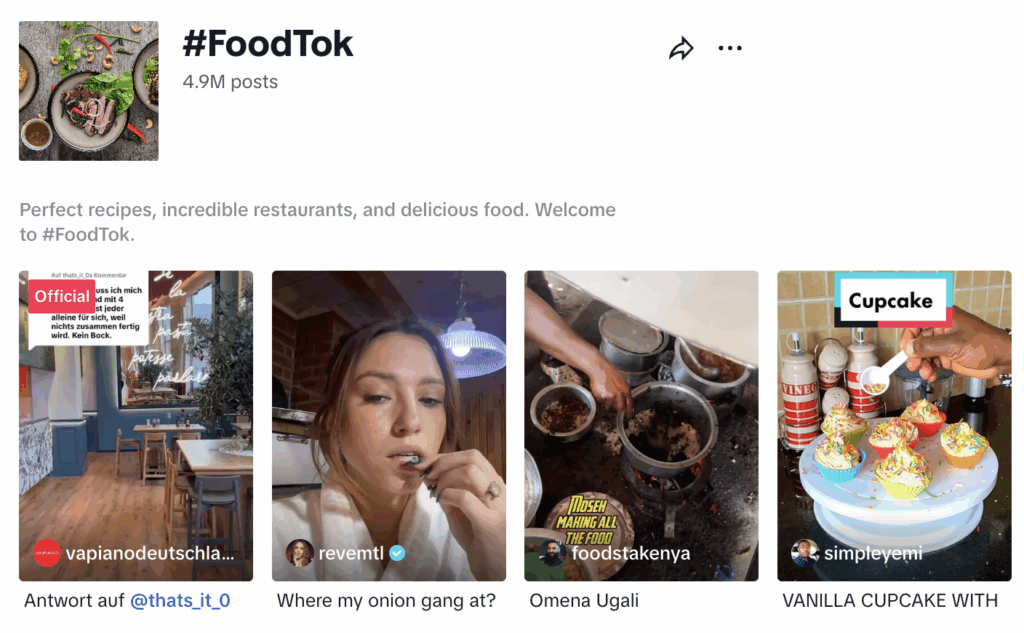
In 2025, TikTok food trends continue to exert a profound influence on the food industry, driving changes in consumer behavior, culinary trends, and marketing strategies. Below are industry insights on TikTok food trends:
TikTok as a Driver of Food Trends
TikTok has become a significant driver of food trends. Unlike traditional media, it relies on user-generated content and powerful algorithms to create a fertile ground for food trends to emerge and spread rapidly. Viral videos featuring innovative recipes, cooking techniques, or visually appealing dishes can quickly gain millions of views and become part of popular culture.
The Power of User-Generated Content
The rise of #FoodTok on TikTok exemplifies the power of user-generated content. This community brings together everyday users, food influencers, and brands to share, inspire, and shape how millions engage with food. The platform’s food trends are not driven by celebrity chefs or television but rise from the community, often starting with a single creator and spreading globally within days.
Visual Content and Replication
TikTok’s short-form video format is highly engaging for food content. Overhead shots, fast-paced edits, and ASMR-style audio make food videos captivating. The platform’s magic lies in replication—users don’t just watch but recreate, remix, and reshare. This interactive consumption transforms content into trends and influences consumer behavior, from cooking habits to restaurant visits and grocery purchases.
Influencer Impact
TikTok influencers play a crucial role in shaping consumer preferences. For instance, food critic Keith Lee’s reviews have led to substantial increases in customer visits to featured restaurants. His authentic and relatable content resonates with audiences, demonstrating TikTok’s ability to drive real-world consumer actions. Micro-influencers are favored by food brands for their high engagement rate and community trust, while macro-influencers offer reach and visibility. Smart brands combine both tiers depending on campaign goals.
Shift in Food Culture
TikTok has democratized trend creation, blurred the lines between consumers and creators, and made food more accessible, social, and personal. #FoodTok has moved beyond recipes to shape conversations about food ethics, culture, accessibility, and innovation. As the platform grows, it will continue to influence how we eat, what we value in food, and how brands connect with audiences.
Rise of Snack Culture
TikTok has fueled the rise of a new era of snack culture. Short-form, highly visual content aligns with the platform’s fast-paced format. Quirky, quick-to-make, and flavor-packed snacks have become mainstream fads. Snack manufacturers are developing products specifically with TikTok virality in mind, and major retailers are using TikTok as a listening tool for trend forecasting.
Home Cooking Trends and Sustainability
TikTok has inspired a resurgence of home cooking through communities like #MealTok. Meal prep, sustainable habits, and low-effort, high-reward recipes have become part of everyday life. Food creators have brought sustainability into the spotlight, focusing on reducing food waste, shopping ethically, and cooking with seasonal or leftover ingredients. This content resonates with growing global concerns around the cost of living, food security, and climate change.
Health and Safety Considerations
While TikTok has led to a surge in culinary creativity, it has also raised concerns about health and safety. Not all food content on the platform is fact-checked or nutritionally sound. Some popular food challenges have been flagged by health experts as unsafe or misleading. Creators have a responsibility to provide credible sourcing and disclaimers when discussing health or nutrition. Food labeling and allergen transparency are also important considerations.
How TikTok Food Trends Compare to Other Platforms

TikTok food trends have unique characteristics and advantages, but when compared to food trends on other platforms, there are also differences. Below is a comparison of the characteristics of TikTok food trends with those on other platforms:
TikTok
- Content Format: Short-form videos, typically lasting 15-60 seconds. They leverage dynamic visuals, fast-paced editing, and ASMR-style audio to engage viewers. For example, Cloud Eggs 2.0, butter boards with a sweet twist, and chamoy pickles are showcased through short videos with vivid visuals and enticing sounds, quickly capturing users’ attention.
- Audience Engagement: Users actively recreate, remix, and reshare content, fostering a strong sense of community. The platform’s interactive features, such as comments and duets, enable real-time interaction between users and creators.
- Trend Duration: Trends emerge and evolve rapidly, often gaining significant attention within days or even hours. However, they may have a relatively short lifespan.
- Influence on Consumer Behavior: It strongly influences users’ cooking habits, encouraging them to try new recipes and ingredients.
- Trend Characteristics: Emphasizes creativity, fun, and novelty. Features quirky snacks, fusion cuisine, and unique cooking methods. Examples include chamoy pickles and Korean corn dogs coated in sugar or crushed ramen.
- Content Format: Primarily focuses on food photography and brief video clips, highlighting the visual appeal and artistry of dishes. For example, chaos cakes and plant-based deli meats are showcased through visually striking images and short clips.
- Audience Engagement: Engagement revolves around likes, comments, and saves. Users follow food accounts for inspiration and ideas but are less likely to recreate content compared to TikTok.
- Trend Duration: Trends last longer than on TikTok. Food trends on Instagram often focus on timeless and visually appealing dishes that remain popular over time, such as bocconcini cheese platters and chaos cakes.
- Influence on Consumer Behavior: Shapes users’ dining preferences and aesthetic choices. Users are more likely to visit restaurants or cafes featuring visually appealing dishes from Instagram.
- Trend Characteristics: Focuses on visual appeal and artistic presentation, emphasizing the aesthetic value of food. For instance, decorative focaccia bread trends on Instagram showcase intricate designs made from vegetables and herbs.
YouTube
- Content Format: Longer videos offering detailed recipe tutorials, cooking shows, and food documentation. For example, plant-based protein drinks and Izzio sourdough bread are presented through in-depth recipe videos.
- Audience Engagement: Engagement includes likes, comments, subscriptions, and video shares. The comment section allows users to ask questions and provide feedback.
- Trend Duration: Trends are relatively stable. Once a video gains popularity, it can attract viewers over an extended period. Classic recipe tutorials may remain relevant even years later.
- Influence on Consumer Behavior: Provides users with in-depth recipe knowledge and cooking techniques, encouraging them to explore complex dishes and develop culinary skills.
- Trend Characteristics: Diverse content ranges from simple everyday recipes to complex professional culinary techniques. For example, the trends on YouTube for cloud bread and dalgona coffee focus on detailed recipe steps and techniques.
- Content Format: Primarily food images and pins linked to recipes or articles. Users can save and share favorite food pins for later reference.
- Audience Engagement: Users primarily save and repin content. Engagement is reflected through saves, repins, and follows, with less direct interaction between users and creators.
- Trend Duration: Food trends on Pinterest are relatively enduring. Users often search for and save food pins based on specific needs, such as holiday recipes or dietary preferences.
- Influence on Consumer Behavior: Influences users’ meal planning and food purchasing decisions. Users save food pins for reference when shopping or cooking.
- Trend Characteristics: Centers on practicality and operability, providing users with easy-to-follow recipes and tips. For example, quick breakfast ideas and healthy meal plans are popular on Pinterest.
| Comparison Dimension | TikTok | YouTube | ||
| Content Format | Short-form videos, dynamic visuals, fast-paced edits, ASMR-style audio | Food photography, brief video clips | Long-form videos, detailed recipe tutorials | Food images, pins linked to recipes |
| Audience Engagement | High recreation, remixing, and resharing; strong community interaction | Focus on likes, comments, saves; less recreation | Likes, comments, subscriptions, video shares | Saves, repins, follows |
| Trend Duration | Rapid emergence and evolution; shorter lifespan | Longer-lasting trends | Relatively stable trends | Enduring trends |
| Influence on Consumer Behavior | Strongly influences cooking habits, driving users to try new recipes and ingredients | Shape dining preferences and aesthetic choices | Provides in-depth recipe knowledge and cooking techniques | Influences meal planning and food purchasing decisions |
| Trend Characteristics | Creative, fun, novel; quirky snacks, fusion cuisine | Visually appealing, artistic; emphasizes food aesthetics | Diverse content, ranging from simple to complex | Practical and easy-to-follow recipes and tips |
Challenges & Opportunities in TikTok Food Trends
Challenges in TikTok Food Trends
1. Oversaturation of Content
Over 2.5 million food-related videos are uploaded daily to TikTok, creating intense competition for visibility. Brands and creators must invest heavily in uniqueness and creativity to stand out.
2. Short Trend Lifespan
TikTok trends often peak within 2–4 weeks, with some fading in days. This rapid cycle pressures creators to produce content at an unsustainable pace.
3. Misinformation and Safety Concerns
Viral food hacks or recipes may lack proper testing, promoting unsafe practices (e.g., using raw flour, or unverified cooking methods). Audiences may lose trust in trending content, and creators face backlash if trends backfire.
4. Algorithm Dependency
TikTok’s “For You Page” (FYP) algorithm prioritizes virality over consistency, making it unpredictable for creators to maintain long-term visibility.
5. Regional and Cultural Nuances
Global trends often overlook regional dietary preferences or ingredient accessibility, limiting relevance in certain markets. Local creators and businesses may find it harder to adapt globally viral trends to their audiences.
Opportunities in TikTok Food Trends
1. Niche Audience Engagement
Focus on micro-trends (e.g., #VeganCheese, #GlutenFreeBaking) to build loyal communities. These trends attract dedicated followers who engage deeply with specialized content.
2. Cross-Platform Content Repurposing
Convert TikTok clips into Instagram Reels, YouTube Shorts, or Pinterest Idea Pins. This extends a trend’s lifespan and maximizes ROI.
3. Data-Driven Trend Forecasting
Leverage analytics tools to monitor rising hashtags, ingredient mentions, and engagement patterns. Real-time insights allow brands to pivot quickly.
4. Authentic Brand-Creator Collaborations
Partner with nano-influencers (5K–50K followers) for cost-effective, relatable campaigns. Their audiences often have higher engagement rates than mega-influencers.
5. Localized Trend Adaptation
Modify global trends to suit regional tastes or ingredient availability. For example, a viral Korean street food trend can be adapted with locally sourced substitutes.
Balancing Challenges and Opportunities
- Agility Over Perfection: Prioritize speed in content creation to capitalize on trends before they peak, even if production quality is simplified.
- Risk Mitigation: Verify trending recipes for safety and cultural sensitivity before amplifying them.
- Long-Term Strategy: Combine TikTok’s viral potential with evergreen content on platforms like YouTube or blogs to sustain audience growth.
Future Outlook: What’s Next for TikTok Food Trends

Looking ahead, TikTok food trends are expected to continue evolving in exciting ways. With advancements in technology, we might see more integration of AR and VR features in food content, offering users virtual cooking classes or immersive dining experience simulations.
The platform’s ongoing efforts to enhance its e-commerce capabilities could lead to more seamless connections between food trends and product sales, such as direct links to ingredient purchases or recipe-related merchandise.
Additionally, as awareness of health and sustainability grows, food trends are likely to place greater emphasis on these aspects, potentially driving innovation in the food industry towards more nutritious and eco-friendly options.
The continuous diversification of user demographics may also bring about new subcategories and niche food trends that cater to specific interests and dietary requirements.
Conclusion & Key Takeaways
In 2025, TikTok food trends significantly impact the food industry and consumer behavior. They reflect and shape consumer preferences, drive food industry innovation, offer marketing opportunities for food brands, democratize food content creation, and influence restaurants and food businesses.
However, challenges such as trend oversaturation, short trend lifespans, misinformation risks, and algorithm dependency must be addressed. Meanwhile, opportunities like niche audience targeting, cross-platform synergy, data-driven strategies, brand-creator collaborations, sustainability focus, and interactive technology can be leveraged.
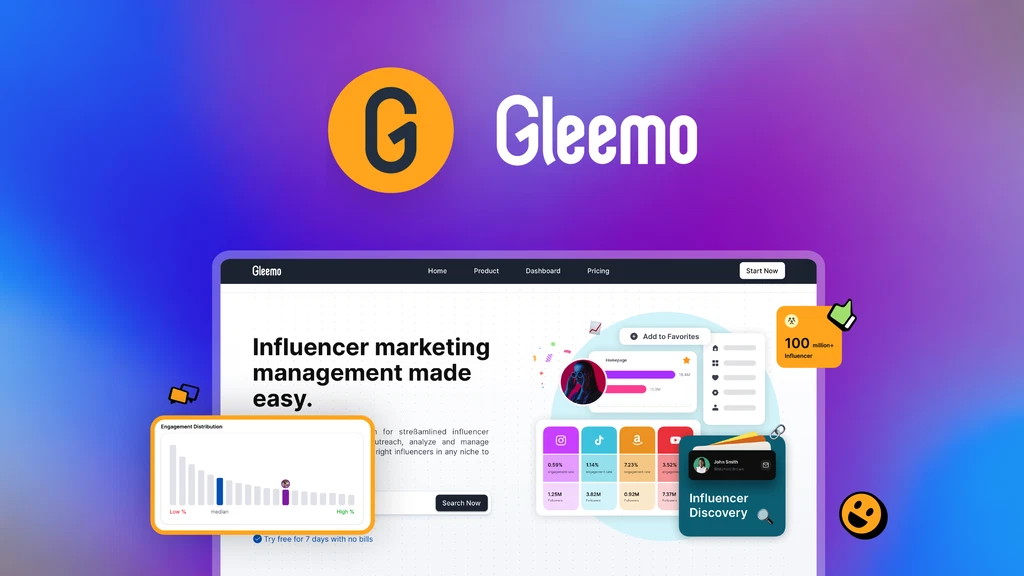
For businesses aiming to thrive in this dynamic landscape, influencer marketing tools like Gleemo can efficiently discover and manage food influencers, navigating the bustling TikTok food trend scene.
FAQs
How long do TikTok food trends typically last?
TikTok food trends typically last for a few weeks to several months. Due to the platform’s rapid content turnover and users’ preference for novelty, trends often emerge and fade quickly.
Can small businesses benefit from TikTok food trends?
Small businesses can benefit from TikTok food trends. TikTok offers a low-cost marketing channel for small businesses to increase brand visibility and attract customer attention. By collaborating with micro-influencers or nano-influencers, small businesses can effectively reach specific target audiences.
How does Gleemo help TikTok creators?
Gleemo helps TikTok creators by providing an extensive database of influencers and advanced search tools. Creators can use Gleemo to find collaborators who align with their content style and target audience.
Additionally, Gleemo offers features like influencer analytics and outreach tools to help creators manage collaborations and track campaign performance, thereby enhancing content quality and reach.
Are TikTok food trends safe to try?
While many TikTok food trends are safe and enjoyable to try, some unverified recipes or unsafe food practices may pose risks. Verify recipes with credible sources and avoid trends involving raw or untested ingredients.
